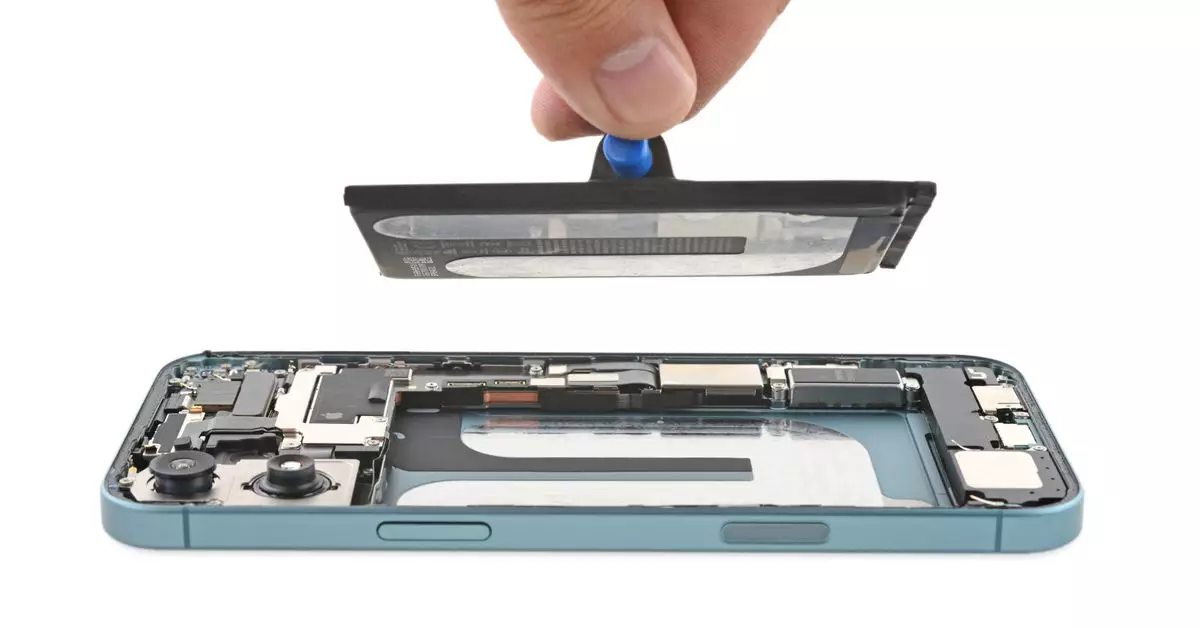In a technological landscape where smartphones have increasingly become a fixture of our daily lives, discussions surrounding repairability have gained considerable traction. The release of the iPhone 16 series has prompted a closer examination of the devices’ inner workings, primarily inspired by the growing trend towards sustainability and consumer rights to repair. As tech enthusiasts and the industry alike weigh in on these advancements, the disassembly process takes center stage, particularly now that Apple has chosen to release repair manuals on launch day.
One of the standout features of the new iPhone 16 is its innovative camera control mechanism. As detailed in disassembly reports, the physical movement of the Camera control button indicates a thoughtful design, emphasizing user interactivity. This reinforces Apple’s ongoing strategy to enhance user experience through tangible features. Alongside this, the integration of a flex cable that likely measures force adds a layer of sophistication for tech users who value nuanced user interfaces. Such advancements not only elevate the functionality of the device but also reflect Apple’s commitment to integrating cutting-edge technology into user-friendly formats.
Perhaps the most groundbreaking development with the iPhone 16 is the introduction of electrically debondable adhesive for the battery enclosure. This technology signifies a pivotal shift in how smartphones are assembled and repaired. The iPhone 16 is the first of its kind to adopt this method, contrasting markedly with its predecessors. According to Apple’s repair manuals, the process allows for the battery to be removed with the application of an electric current, streamlining what has traditionally been a more cumbersome procedure. During disassembly, technicians found that a mere application of 20 volts could facilitate this process in mere seconds, underscoring the improved efficiency and user serviceability.
While initial results demonstrate that the new adhesive significantly reduces the effort required to replace the battery, there are implications for longevity to consider. Apple has cautioned that over time, the bond may strengthen, potentially complicating future repairs. This forewarning serves as a reminder that while innovation is praiseworthy, it should be accompanied by sustainable practices. Repair communities will no doubt be analyzing the long-term reliability of this new adhesive as they adapt to this change in smartphone design.
The disassembly of the iPhone 16 not only reveals the impressive engineering that Apple boasts but also spotlights the importance of repairability in today’s market. With new technologies like the electrically debondable battery adhesive, the iPhone 16 represents a significant step forward for the tech giant and its users. As consumers demand more sustainable and repairable products, Apple’s latest innovations hint at a future where user empowerment and technological sophistication go hand in hand, forging a new relationship between manufacturer and consumer. This evolution invites ongoing scrutiny and dialogue and paves the way for continued advancements in smartphone design and usability.

